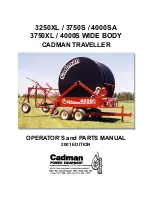
Spatial Reference Manual
Page 144 of 158
Version 4.4
04/06/2019
13.10.5.1
Alignment DCM
The alignment DCM (direction cosine matrix) is used to represent an alignment offset
of Spatial from its standard alignment. A DCM is used rather than euler angles for
accuracy reasons. To convert euler angles to DCM please use the formula below with
angles in radians.
DCM[0][0] = cos(heading) * cos(pitch)
DCM[0][1] = sin(heading) * cos(pitch)
DCM[0][2] = -sin(pitch)
DCM[1][0] = -sin(heading) * cos(roll) + cos(heading) * sin(pitch) * sin(roll)
DCM[1][1] = cos(heading) * cos(roll) + sin(heading) * sin(pitch) * sin(roll)
DCM[1][2] = cos(pitch) * sin(roll)
DCM[2][0] = sin(heading) * sin(roll) + cos(heading) * sin(pitch) * cos(roll)
DCM[2][1] = -cos(heading) * sin(roll) + sin(heading) * sin(pitch) * cos(roll)
DCM[2][2] = cos(pitch) * cos(roll)
13.10.6
Filter Options Packet
Filter Options Packet
Packet ID
186
Length
17
Field
#
Bytes
Offset
Data
Type
Size
Description
1
0
u8
1
Permanent
2
1
u8
1
Vehicle type, see section 13.10.6.1
3
2
u8
1
Internal GNSS enabled (boolean)
4
3
u8
1
Magnetometers enabled (boolean)
5
4
u8
1
Atmospheric altitude enabled (boolean)
6
5
u8
1
Velocity heading enabled (boolean)
7
6
u8
1
Reversing detection enabled (boolean)
8
7
u8
1
Motion analysis enabled (boolean)
9
8
u8
1
Automatic magnetic calibration enabled (boolean)
10
9
8
Reserved (set to zero)
Table 100: Filter options packet















































